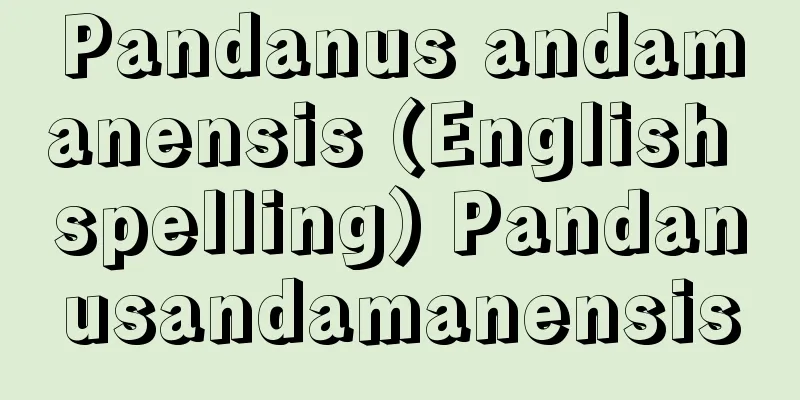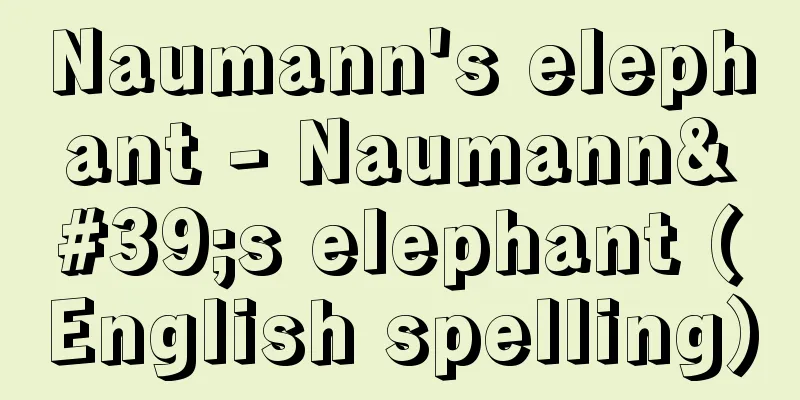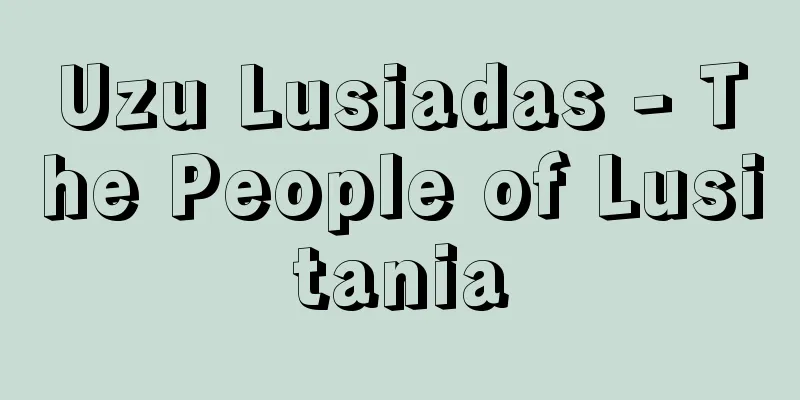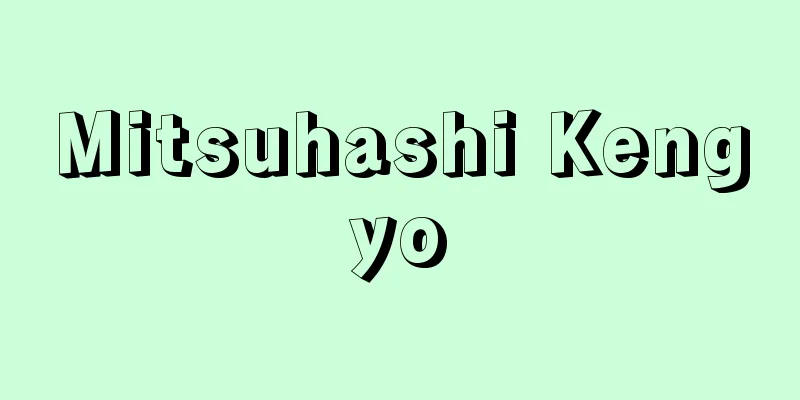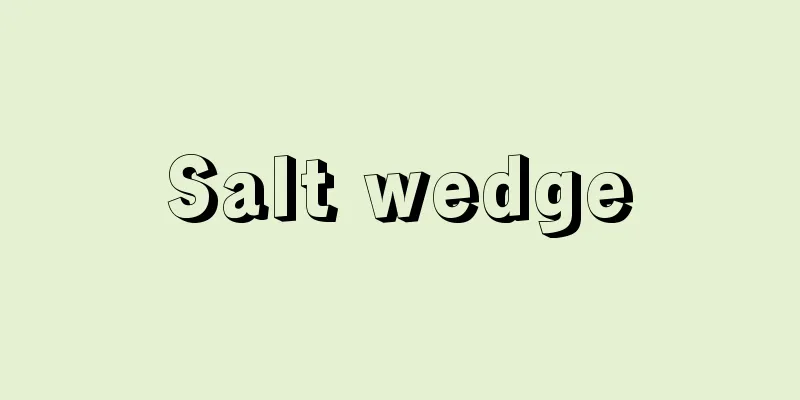Kakiami (English spelling) lead net
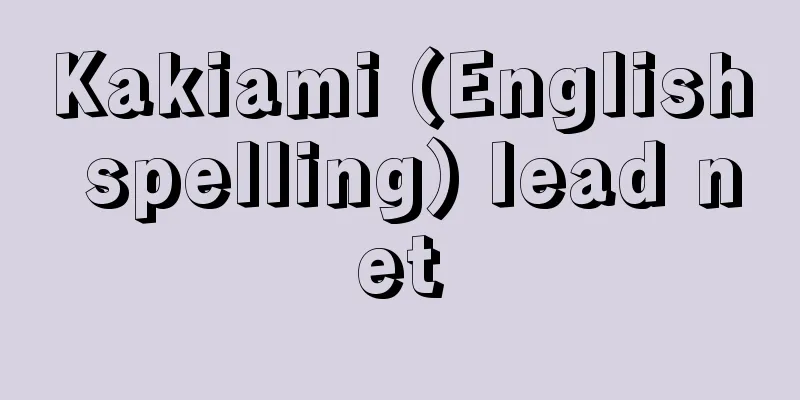
|
A net that forms part of a fixed fishing net. It is also called road net, hand net, or kakedashi. Fish have a tendency to move to deeper waters when they encounter an obstacle. Taking advantage of this tendency, this net has the role of blocking the swimming passage of the schools of fish and guiding them into the main net. It is stretched vertically like a tennis net, from the shallow areas near the shore to the end of the fixed net (the entrance to the main net) installed offshore, all the way from the surface to the seabed. In shallow fishing grounds, there are also fence nets that are over 1000 meters long. In some fishing grounds (Noto region of the Sea of Japan), "oki fence nets" are stretched to guide fish that migrate further offshore than the main net into the main net. Traditionally, straw netting (specific gravity 1.4), cotton thread (specific gravity 1.54), and Manila twine (specific gravity 1.45) were used for the netting materials, but nowadays, most of them are made of synthetic fibers. The main materials used are Saran (specific gravity 1.70), Krehalon (specific gravity 1.70), Cremona (specific gravity 1.3), Nylon (specific gravity 1.14), Hi-Zex (specific gravity 0.96), Pylen (specific gravity 0.91), and even Seaking (a Saran core covered with polyethylene film, specific gravity 1.45). The size of the mesh (opening) is larger than the circumference of the fish body, and even when the main target of the fishing is relatively small fish such as horse mackerel and mackerel, it is 10 to 18 centimeters, and when the main target is yellowtail, it can reach 150 centimeters. Therefore, theoretically, fish can pass through the net freely. The colors of the netting materials are often yellow, deep orange, and other colors that are easy to see and scare fish. The reason for using the threatening coloration is to make the fish recognize the net as an obstacle and lure them into the main net. [Hideo Soeda and Kiyoshi Yoshihara] [Reference item] |Source: Shogakukan Encyclopedia Nipponica About Encyclopedia Nipponica Information | Legend |
|
漁業の定置網の一部を構成する網。道網、手網、掛出(かけだ)しなどともよばれる。魚は障害物があると、より深部へ移動する習性がある。この習性を利用して、魚群の遊泳通路を遮断して、身網(みあみ)に誘導する役割をもつ網である。海岸近くの浅い所から沖合に設置してある定置網の端口(はぐち)(身網の入口)まで、表層から海底まで全面に、テニスのネットのように垂直に張り立てられる。遠浅の漁場では、長さが1000メートルを超える垣網もある。身網よりも沖合を回遊する魚を身網へ誘導するための「沖垣網」を張り立てる漁場(日本海能登(のと)地方)もある。 垣網に用いられる網地は、従来は藁(わら)網(比重1.4)、綿糸(比重1.54)、マニラトワイン(比重1.45)などが用いられていたが、現在ではほとんど合成繊維が用いられる。主としてサラン(比重1.70)、クレハロン(比重1.70)、クレモナ(比重1.3)、ナイロン(比重1.14)、ハイゼックス(比重0.96)、パイレン(比重0.91)、さらにはシーキング(芯(しん)にサランを用いポリエチレンフィルムで被覆したもので、比重は1.45)などが用いられている。網目の大きさ(目合い)は、魚体周長よりも大きく、アジ、サバなどの比較的小形の魚を主要漁獲対象としている場合でも10~18センチメートル、ブリを対象にする場合は150センチメートルに及ぶ。したがって理論的には魚は垣網を自由に通り抜けることが可能である。網地の色彩は、黄色、濃橙色など魚の目につきやすく威嚇する色が多く用いられる。威嚇色を用いるのは、魚に垣網を障害物と認識させ身網に誘導するためである。 [添田秀男・吉原喜好] [参照項目] |出典 小学館 日本大百科全書(ニッポニカ)日本大百科全書(ニッポニカ)について 情報 | 凡例 |
<<: Key-thorn seaweed - Key-thorn seaweed
>>: Writing notebook - Kakiagecho
Recommend
Acceleration disease
When a vehicle repeatedly stops, starts, turns, o...
Ficus microcarpa (English spelling) Ficus microcarpa
…Figs [Okamoto Motoji]. … *Some of the terminolog...
Langobarden
...As a result, many of the stadts were tribal gr...
Metcalf, J.
… New technologies for road construction also und...
Search of the house - kataku sosaku
It refers to entering a person's residence to...
Cape daisy (English spelling)
... In horticulture, they can be broadly divided ...
Chiton (Stone Turtle Shell) - Chiton
A general term for Polyplacophora mollusks, or one...
Boston Marathon
A marathon race held in Boston, USA. Officials of ...
Kadozuke - Kadozuke
A type of street performance or public art. A gen...
coin
…This refers to coins that are cast from metal, i...
One-handed fishing method - Katatemawashigyoho
…It evolved into beach seine nets in the early mo...
Ezohebiichigo - Ezohebiichigo
... F . iinumae Makino grows in clusters in sligh...
eros (English spelling)
...Some of the most representative ones, summariz...
Stone Castle
?-1865 * A monk from the late Edo period. He was ...
Ashikaga Seasonal Chronicles
A record of the battles in the Kinai region from 1...
